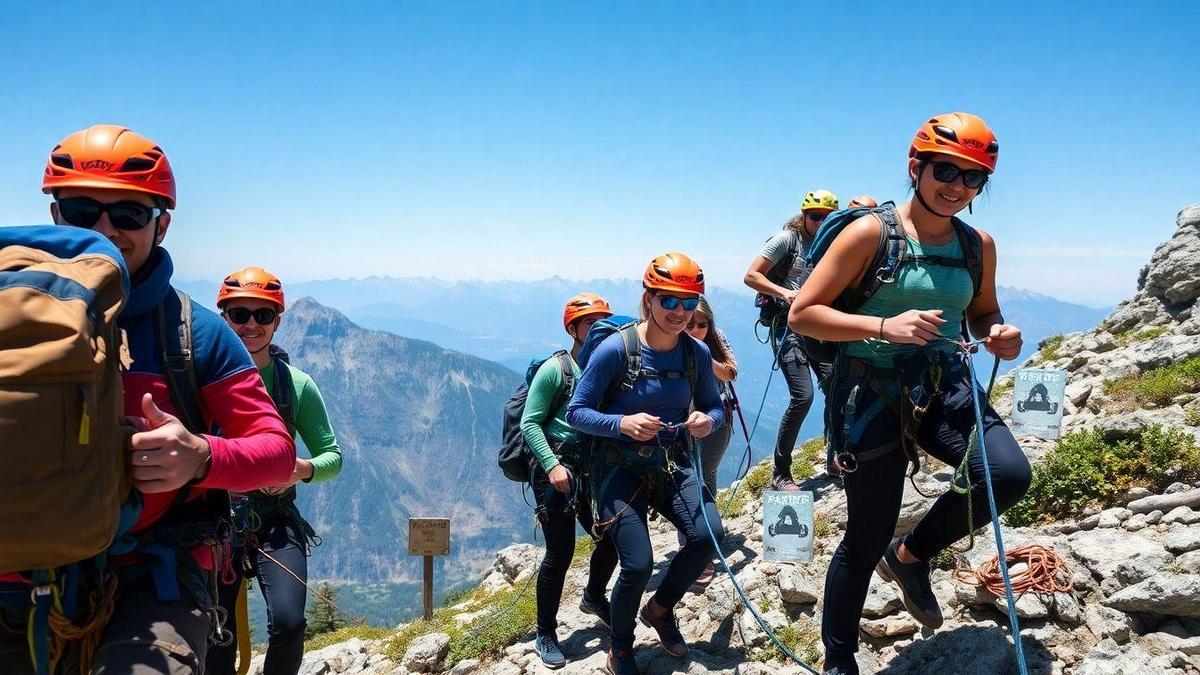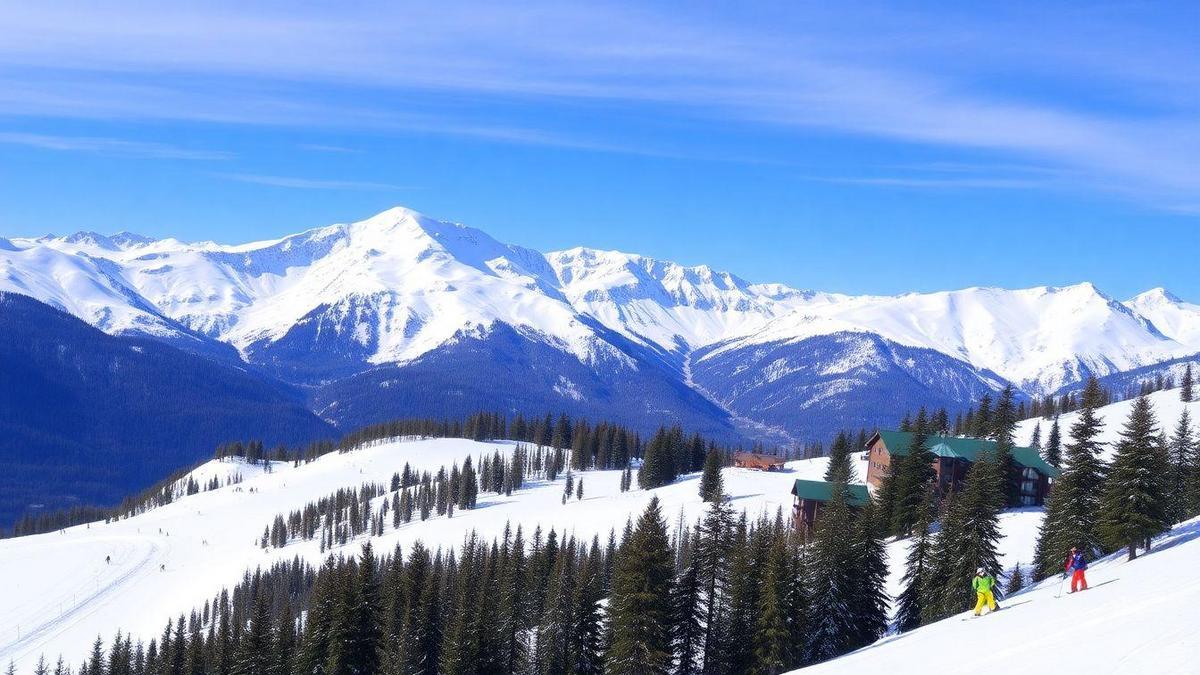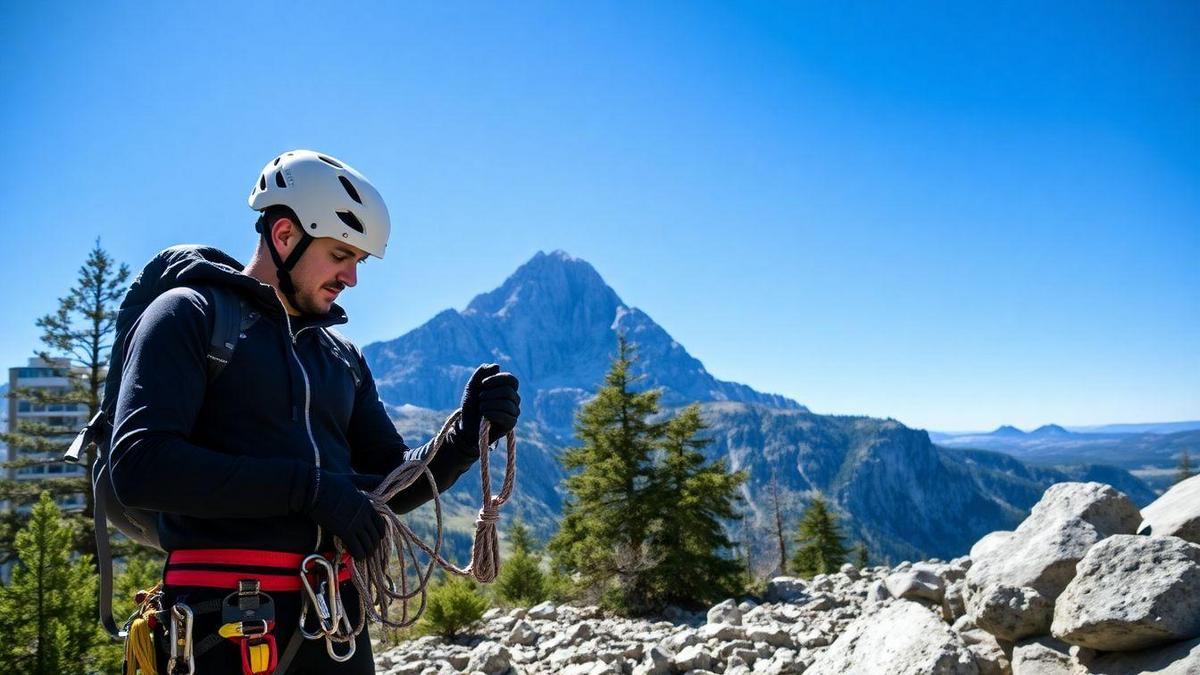
Understanding Group Mountain Climbing Safety
Importance of Safety Precautions for Group Mountain Climbing Activities
When you decide to climb a mountain with friends or a group, safety should always come first. It’s like having a safety net beneath you as you navigate the heights. Without proper precautions, a fun adventure can quickly turn into a risky situation. By following safety precautions for group mountain climbing activities, you protect not just yourself but everyone in the group.
Common Risks in Group Mountain Climbing
Climbing a mountain isn’t just about reaching the top; it comes with its own set of challenges. Here are some common risks you might face:
- Weather Changes: The weather can shift rapidly in the mountains. One moment it’s sunny, and the next, you could be caught in a storm. Understanding how weather conditions affect mountain climbing safety is crucial.
- Injury: Falls or sprains can happen, especially on rocky or uneven terrain. Consider injury prevention methods for a safer experience.
- Getting Lost: It’s easy to lose your way, especially if the trail isn’t well-marked. Using safe mountain climbing routes can help mitigate this risk.
- Altitude Sickness: As you climb higher, the air gets thinner, which can lead to headaches and nausea. Familiarize yourself with altitude sickness and its impact.
How to Identify and Manage Risks
Knowing the risks is just the start; managing them is key. Here’s how you can keep your group safe:
| Risk | Management Strategy |
|---|---|
| Weather Changes | Check forecasts and be prepared with gear. |
| Injury | Carry a first-aid kit and know basic first aid. |
| Getting Lost | Use maps and GPS devices, and stick together. |
| Altitude Sickness | Ascend gradually and stay hydrated. |
By being aware of these risks and having plans in place, you can enjoy your climb with peace of mind. Remember, it’s all about teamwork. When everyone looks out for each other, the experience becomes a lot more enjoyable and safe.
Essential Mountain Climbing Gear Safety
Must-Have Safety Equipment for Climbing
When you’re gearing up for a mountain climb, having the right safety equipment can make all the difference. Here’s a list of must-have gear that you should consider before hitting the trails:
- Helmet: Protects your head from falling rocks and any unexpected bumps.
- Harness: Keeps you secure while climbing and helps in controlling falls.
- Rope: A strong climbing rope is essential for safety and support.
- Carabiners: These clips are vital for connecting gear and securing yourself.
- First Aid Kit: Always be prepared for minor injuries or emergencies. Refer to first aid kits every mountain climber should carry.
- Map and Compass: Helps you stay on track and avoid getting lost.
- Emergency Whistle: A simple tool that can be a lifesaver in emergencies.
Checking Your Gear Before the Climb
Before you set off, it’s crucial to check your gear. This is not just a routine; it’s a lifesaver. Make sure everything is in top shape. Here are some quick tips:
- Inspect your helmet for cracks or damage.
- Check your harness for wear and tear.
- Ensure your rope has no frays or knots.
- Test your carabiners to make sure they lock properly.
- Review your first aid kit to ensure you have all necessary supplies.
Creating a Climbing Safety Equipment Checklist
A checklist can help you keep track of everything you need. Here’s a simple table to guide you:
| Safety Equipment | Condition Check |
|---|---|
| Helmet | No cracks or damage |
| Harness | No wear or frays |
| Rope | No frays or knots |
| Carabiners | Locking function works |
| First Aid Kit | Fully stocked |
| Map and Compass | Up-to-date |
| Emergency Whistle | Works properly |
Having this checklist handy can help you stay organized and prepared. Remember, safety precautions for group mountain climbing activities are not just about having gear; they’re about knowing how to use it effectively.
Climbing Group Safety Tips
Establishing Roles Within Your Climbing Team
When you head out for a mountain climb, having clear roles in your group is a game changer. Think of it like a well-oiled machine. Each person has a job that plays a part in the overall success of the climb. Here’s a simple breakdown of roles you might consider:
| Role | Responsibilities |
|---|---|
| Leader | Guides the group, makes decisions, and sets the pace. |
| Navigator | Keeps track of the route, using maps or GPS. |
| Safety Officer | Checks gear and ensures everyone follows safety rules. |
| Medic | Handles any injuries or health issues that arise. |
| Motivator | Keeps spirits high and encourages the team. |
Assigning these roles helps everyone know what to focus on. It can also relieve stress, as you won’t feel like you’re carrying the weight of the world on your shoulders.
Importance of Team Communication
Good communication is the glue that holds your climbing team together. Without it, you might as well be climbing with your eyes closed. Here are a few reasons why communication is key:
- It helps in making quick decisions.
- It keeps everyone informed about changes in the plan.
- It allows team members to voice concerns or ask for help.
When you’re out there, clear communication can mean the difference between a safe climb and a risky situation.
Effective Climbing Team Communication Strategies
To keep the lines of communication open, consider these strategies:
- Use Hand Signals: When you’re on the mountain, shouting can be hard. Hand signals can help convey messages without making a sound.
- Regular Check-Ins: Take a moment every so often to see how everyone is doing. A simple How are you feeling? can go a long way.
- Establish a Code Word: Choose a word that signals something important, like Stop or Danger. This can help everyone react quickly in emergencies.
- Be Honest: If you’re feeling tired or unwell, speak up! It’s better to address issues before they become bigger problems.
- Practice Beforehand: Before you hit the trail, practice your communication methods. This way, everyone knows what to expect.
By following these strategies, you can create an environment where everyone feels comfortable sharing their thoughts and concerns.
Mountain Climbing Emergency Procedures
What to Do in Case of an Accident
When you find yourself in an accident while climbing, it’s important to stay calm. Panic can cloud your judgment. Here’s a quick guide on what to do:
- Assess the situation: Check for injuries. If you or a fellow climber is hurt, try to determine the severity.
- Call for help: If you have a cell phone and signal, call for emergency services. If not, use a whistle or shout to alert others nearby.
- Administer first aid: If you know basic first aid, treat any injuries while waiting for help. This could mean applying pressure to a wound or keeping someone still if they’re hurt. Review first aid measures for accidents.
- Stay put: If you’re in a safe spot, stay where you are. Moving can make things worse, especially if you’re injured.
Preparing for Unexpected Situations
Preparation is key when climbing mountains. Here are some safety precautions for group mountain climbing activities you should keep in mind:
- Know your route: Familiarize yourself with the trail and any potential hazards.
- Pack essential gear: Always carry a first aid kit, a map, a compass, and a flashlight.
- Inform someone: Let a friend or family member know your plans and expected return time.
Developing a Mountain Climbing Emergency Plan
Creating a solid emergency plan can save lives. Here’s how you can develop one:
| Step | Details |
|---|---|
| Identify risks | Consider potential dangers like weather changes or rockfalls. |
| Assign roles | Designate who will call for help, administer first aid, etc. |
| Practice scenarios | Run through emergency drills with your group before the climb. |
By taking the time to prepare and plan, you can help ensure that your mountain climbing experience is not only thrilling but also safe.
Safety Protocols for Climbing
Setting Up Climbing Safety Rules
When you think about climbing a mountain, safety should be your top priority. Setting up climbing safety rules can make a huge difference. Here are some key rules you should consider:
- Check Your Gear: Always inspect your equipment before you start. Make sure everything is in good condition.
- Know the Route: Familiarize yourself with the trail. Use maps or apps to help you stay on track.
- Stay Together: If you’re with a group, stick together. Don’t wander off alone.
- Communicate: Keep talking with your group. Share your plans and any concerns.
- Plan for Emergencies: Have a first-aid kit and know how to use it. Refer to emergency preparedness tips.
Importance of Following Safety Protocols
Following safety protocols is crucial. It can mean the difference between a fun adventure and a dangerous situation. When everyone in your group knows and follows the rules, you all can enjoy the climb more.
For example, if someone gets hurt, having a first-aid kit can help until help arrives. Plus, if you stick together, you can support each other through tough spots. Remember, safety precautions for group mountain climbing activities aren’t just rules; they’re lifelines.
How to Implement Safety Protocols for Climbing
Implementing safety protocols is easier than you think. Here’s a simple way to do it:
- Gather Your Group: Before you start, sit down with everyone and discuss the rules.
- Assign Roles: Give each person a job, like checking gear or leading the way.
- Practice Communication: Use hand signals or shout-out phrases to keep everyone informed.
- Review the Plan: Go over the route and emergency procedures again, so everyone is clear.
| Step | Action | Purpose |
|---|---|---|
| 1 | Gather Your Group | Discuss rules together |
| 2 | Assign Roles | Ensure everyone has a task |
| 3 | Practice Communication | Keep everyone informed |
| 4 | Review the Plan | Clarify the route and procedures |
By following these steps, you can create a safer climbing experience for everyone involved.
Mountain Climbing First Aid Practices
Basic First Aid Skills Every Climber Should Know
When you set out to climb a mountain, it’s crucial to have some basic first aid skills. You never know when an accident might happen, and being prepared can make all the difference. Here are some skills you should learn:
- CPR: Knowing how to perform CPR can save a life. Take a class to learn the steps.
- Wound care: Learn how to clean and dress wounds. This skill can help prevent infections.
- Splinting: If someone gets hurt, you may need to immobilize a limb. Practice how to make a splint using available materials.
- Recognizing signs of hypothermia and heat exhaustion: Be aware of the symptoms so you can act quickly.
Creating a First Aid Kit for Your Climbing Group
A well-stocked first aid kit is essential for any climbing group. Think of it as your safety net. Here’s a list of items you should include:
| Item | Purpose |
|---|---|
| Adhesive bandages | For small cuts and scrapes |
| Sterile gauze | To cover larger wounds |
| Antiseptic wipes | To clean wounds |
| Pain relievers | To ease discomfort |
| Emergency blanket | To keep warm in emergencies |
| Elastic bandage | For sprains and strains |
| Tweezers | To remove splinters |
| First aid manual | For guidance in emergencies |
Having these items on hand can help you respond to injuries quickly and effectively.
Understanding Mountain Climbing First Aid Practices
Understanding first aid practices is more than just having a kit. It’s about knowing how to use the items in it. Familiarize yourself with each item and practice using them. You might even want to run through a few scenarios with your group. This way, everyone knows their role if something goes wrong.
Remember, safety precautions for group mountain climbing activities are not just about avoiding injuries. They are about being ready to act when they happen. The more prepared you are, the more confident you’ll feel on your climb.
Frequently Asked Questions
What are some basic safety precautions for group mountain climbing activities?
Always check the weather. Wear proper gear. Ensure everyone knows the route. Stay together as a group.
How can we prepare for emergencies during climbing?
Bring a first aid kit. Know how to use it. Have a plan for emergencies. Carry a whistle or signal device.
What should we do before starting a climb?
Do a safety briefing. Check everyone’s gear. Discuss the climbing plan. Make sure everyone is ready.
What if someone gets injured on the mountain?
Stay calm. Assess the injury. Use your first aid kit. If serious, call for help.
How can I ensure my group stays safe while climbing?
Keep a close eye on each other. Communicate regularly. Set pace according to the slowest member. Follow the safety precautions for group mountain climbing activities.


